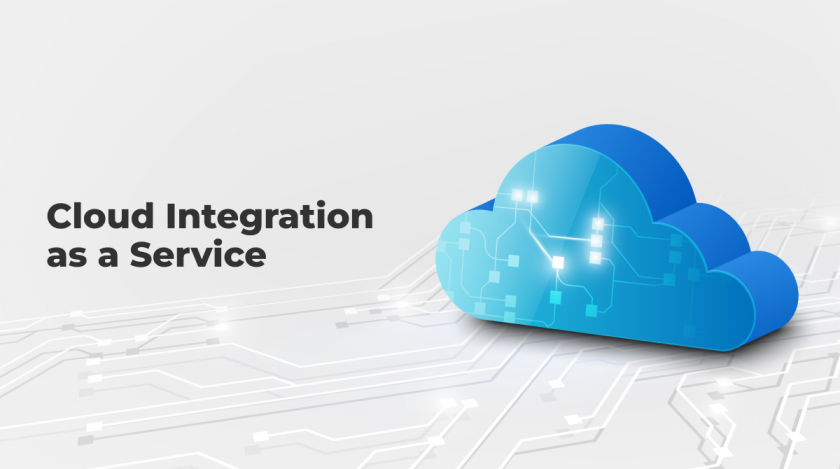Introduction
Cloud integration connects different cloud-based applications, data, and infrastructure spread across multiple platforms to facilitate data motion and secure data exchange. Businesses commonly use it to use disparate applications and systems to manage their data and operations. By utilizing cloud integration, companies can connect various cloud-based services, applications, and platforms to create a unified environment and allow for more efficient data exchange.
In this article, DATAFOREST will look at some common challenges when implementing cloud integration and some solutions for overcoming them.
Let’s dive into it!
What is Cloud Integration?
Cloud integration is the process of connecting and integrating applications, data, or services that are hosted in a cloud environment. It allows companies to manage and track data motion across disparate applications, cloud platforms, and environments. It ensures that data is secure and encrypted while providing real-time access to business applications and data.
Why Integrate Business Applications?
Cloud integration as a service can help you integrate your applications and make them work together.
It’s essential to understand the benefits of integration, as well as its challenges:
- Integrating cloud-based applications helps companies maximize their cloud investments and create a hybrid environment that meets their business needs.
- Integration can save time by automating tasks. Suppose you have an application that collects data from one source and another that needs it. Cloud integration can send it over, so you don’t have to copy it manually every time. This makes your life easier while increasing efficiency in your company.
- The integration process saves companies from having many copies of everything on their computers or servers – it keeps things organized! By checking for errors before sending information to another system, it also helps avoid errors.
- It allows them to combine their existing enterprise IT infrastructure with public clouds, providing them with the flexibility and scalability to meet the demands of their organization.
- Integration of the cloud also provides them with options for planning their future, ensuring that their data is secure, and addressing their data motion and integration challenges.
Challenges of Cloud-Based Integration
The challenges of cloud-based integration include the following:
- Security. In the cloud, you must trust that the service provider will protect your data and keep it secure. Additionally, you may have to rely on them sharing your data with third parties with your consent.
- Cost. If you’re using a SaaS solution, you’ll be paying fees based on usage and the number of users–but these can add up quickly if you have many users accessing the same data from different locations or in large volumes at once (e.g., when processing transactions).
- Data portability. You might want or need to move certain information between platforms and services over time. Most cloud providers must restrict customers’ ability to move data out per period to make this easier for them.
- Integration across platforms. Integrating multiple tools requires additional coding work beyond simply connecting two systems through an API call.
- Scalability. Cloud-based solutions aren’t always scalable enough when they first launch because they need time before they’re able to handle large amounts of traffic coming into them at once
Solutions for Cloud Integration
Cloud integration is a new way of doing business. It is a vital part of the cloud and an essential tool for organizations that want to make it easier to get data from one application into another. It can help you do things like:
- Move data between your applications and your partners or customers (including third parties).
- Automate processes so that data gets pulled into your systems when needed instead of having someone manually enter it each time there’s an update from another system or person.
- Make sure that changes made by other departments or teams are consistent. For example, suppose marketing changes its email marketing campaign while Sales already sent emails promoting that campaign earlier this week. In that case, both departments could send out conflicting messages about what products are available for purchase at different times during the year!
There are some significant issues in cloud integration. Your development team and IT department need to be highly skilled to handle this task correctly. It requires planning, testing, and implementation of new technologies and processes. It also requires organizations to ensure their data is secure and provides built-in encryption to protect their data.
Conclusion
Cloud integration has a lot of advantages, but it can also present some challenges. Understanding the pros and cons of using this type of software is vital before deciding if it’s right for your business. We’ve given you enough information here so that you can make an informed decision about whether or not cloud computing is something worth exploring!
DATAFOREST offers Cloud Integration as a Service, providing customers with the solutions they need to integrate their cloud-based applications, manage data motion, and create a secure and reliable environment. We provide the expertise, tools, and resources required to ensure that your cloud integration is successful, providing you with the peace of mind you need to focus on your business.
Let DATAFOREST help your enterprise navigate the complexities of cloud-based applications, data motion, and secure data integration. Our cloud integration as a service provides the planning path and other options to help your business easily integrate disparate applications, data, and environment hybrid infrastructure. Schedule a consultation with us to explore opportunities for real-time integration platforms, cloud-based solutions, and built-in encryption for your enterprise.
Integrate your business with the power of the cloud with DATAFOREST!















